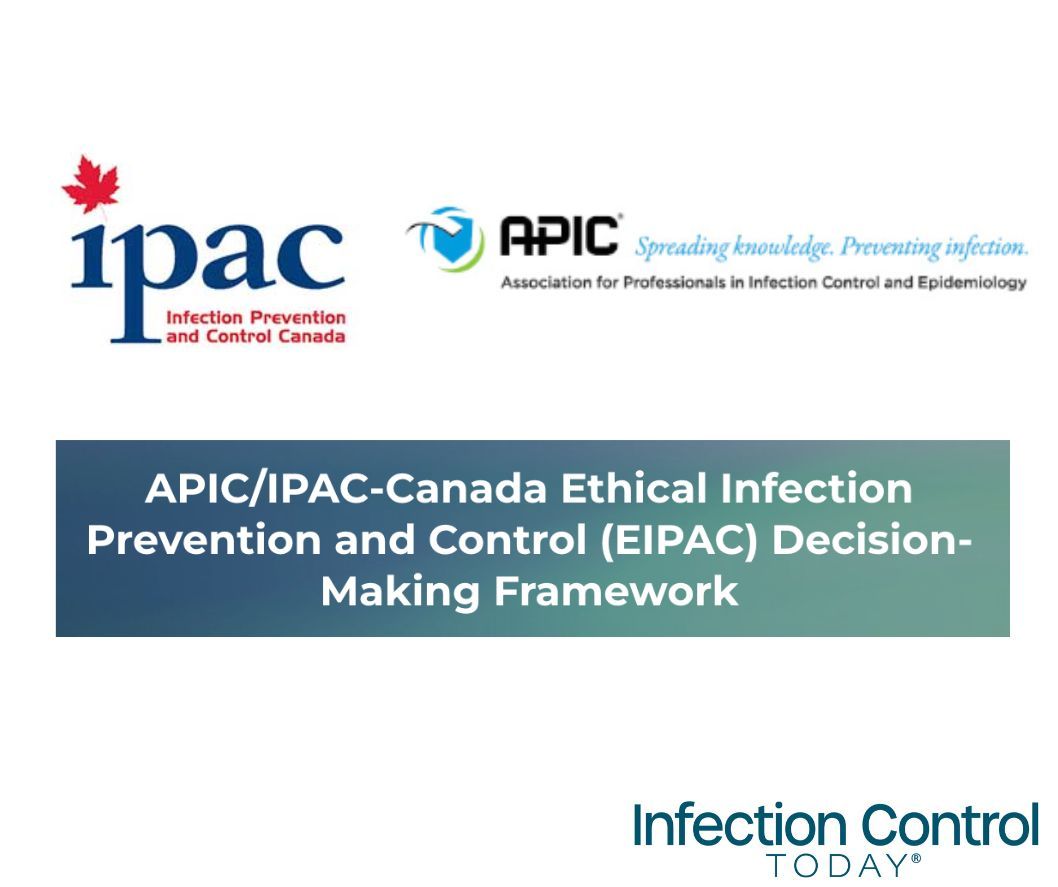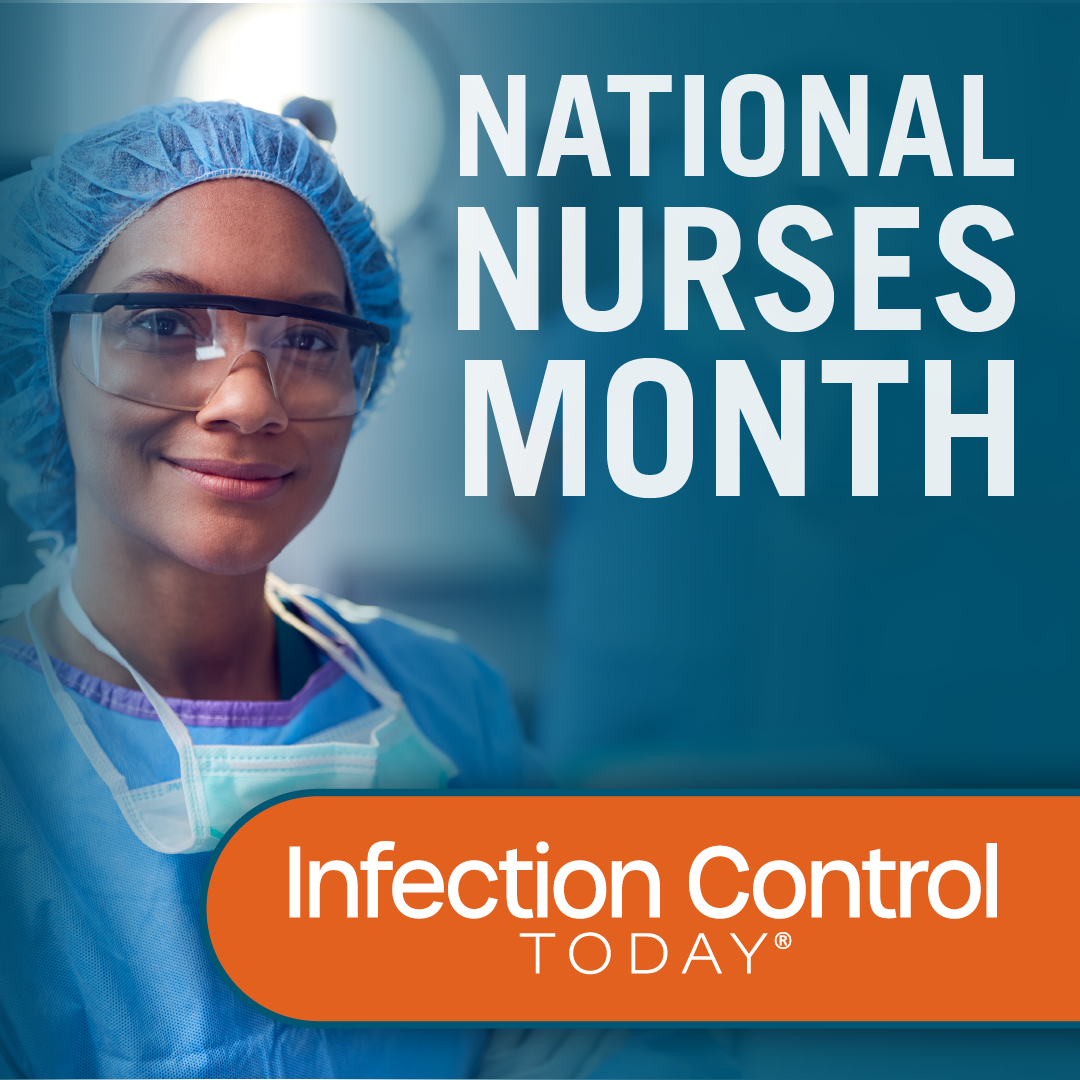Introducing the Ethical Infection Prevention and Control Decision-Making Framework
APIC and IPAC Canada introduce the EIPAC Decision-Making Framework to guide health care professionals through ethical dilemmas in infection prevention, promoting fair and transparent decision-making.
APIC and IPAC Canada introduce the EIPAC Decision-Making Framework
(Image credits to APIC and IPAC Canada, respectively)

The Association for Professionals in Infection Control and Epidemiology (APIC) and Infection Prevention and Control Canada (IPAC Canada) have introduced a new resource, the Ethical Infection Prevention and Control (EIPAC) Decision-Making Framework, to aid health care professionals in addressing ethical dilemmas in infection prevention and control (IPC). This comprehensive toolkit, available on both organizations' websites, guides IPC teams through a step-by-step process for making ethically sound decisions in challenging scenarios. It provides a structured approach to identifying relevant facts, values, and principles, exploring options, and making informed decisions.
Developed in collaboration with Sunnybrook Health Sciences Centre and other health care partners, the EIPAC framework is based on an existing ethical framework by the Community Ethics Network and contributions from the University of Toronto Joint Centre for Bioethics and Trillium Health Partners. This new resource aims to enhance ethical IPC practices, fostering a safer health care environment.
To learn more, Infection Control Today® (ICT®) interviewed APIC 2024 Board of Directors member Lisa Caffery, MS, BSN, RN, MEDSURG-BC, CIC, FAPIC. She has been an infection preventionist (IP) for more than 25 years and is also the coordinator of infection prevention at Genesis Health System in Davenport, Iowa.
Infection Control Today's May Trending Topic: National Nurses Month

ICT: Can you elaborate on the ethical decision-making principles outlined in the EIPAC Decision-Making Framework and how they can be applied in real-world scenarios?
Lisa Caffery, MS, BSN, RN, MEDSURG-BC, CIC, FAPIC: There are 4 key principles described in the framework:
- Demonstrating respect
- Promoting wellbeing
- Minimizing harm
- Working together
The 4 principles, in addition to the values of trust and fairness, are already central to the practice of IPC. The principles and values can be applied to all practice settings and utilized by all infection preventionists regardless of how long they have been in practice. Reviewing the scenarios in the toolkit, you will see how these values and principles were considered in each one and the process documented in the framework form. This is not a process to be rushed. You want to gather all the facts and information available to make the best decision for the patient, resident, staff, and family. It is important to keep in mind that the final decision could change if new information is discovered at a later time.
Throughout the pandemic, IPs dealt with multiple issues for which little to no guidance was available to make a decision. The EIPAC framework offers a standard approach to working through issues for which little to no guidance is available to determine the best option for all involved.
ICT: How does the EIPAC framework address situations where there is uncertainty or conflicting values in infection prevention and control practices?
LC: It is designed to help through situations where there is little to no guidance on how to respond and provide the best option for the request. The IP must consider all current recommendations where available. If none are available or those that are available are not clear, using the framework will help the IP think through the scenario as presented.
ICT: Could you provide an example of a challenging scenario in the guide and walk us through how the EIPAC framework was used to navigate it?
LC: Each scenario has its own unique set of challenges. The actions represent the best option for the scenario presented. The scenarios give users examples of how to work through questions. In each scenario, the framework was used to determine the best outcome/option based on the information shared. The IP should collaborate with the care team as they work through the framework. Using the framework, the IP will identify the information, determine the relevant ethical principles, explore and consider options, and act. The scenarios in the toolkit were developed to show applicability in multiple settings.
ICT: What role do you see the EIPAC Decision-Making Framework playing in promoting patient safety and minimizing risks in health care settings?
Patient safety and minimizing harm are essential to the EIPAC framework. The framework will help the IP consider all options for ensuring the safety of patients, residents, staff, and visitors.
ICT: How was the EIPAC framework developed, and what collaborations were involved in its creation?
LC: The EIPAC framework was developed by the team at Sunnybrook Health Services Centre in Toronto, Ontario, Canada, in collaboration with Toronto health care ethicists. It was published in 2023 in Infection Control & Hospital Epidemiology.
The Sunnybrook team presented their work at the 2023 IPAC Canada conference. APIC CEO Devin Jopp and then president-elect Tania Bubb, PhD, RN, CIC, FAPIC, attended the session and felt that the EIPAC framework would benefit all infection preventionists regardless of their practice setting. Leadership at APIC and IPAC Canada were both supportive of making the framework available to everyone through the creation of a tool kit. The team members consisted of the Sunnybrook team and leaders from APIC and IPAC Canada.
Newsletter
Stay prepared and protected with Infection Control Today's newsletter, delivering essential updates, best practices, and expert insights for infection preventionists.
Reducing Hidden Risks: Why Sharps Injuries Still Go Unreported
July 18th 2025Despite being a well-known occupational hazard, sharps injuries continue to occur in health care facilities and are often underreported, underestimated, and inadequately addressed. A recent interview with sharps safety advocate Amanda Heitman, BSN, RN, CNOR, a perioperative educational consultant, reveals why change is overdue and what new tools and guidance can help.
New Study Explores Oral Vancomycin to Prevent C difficile Recurrence, But Questions Remain
July 17th 2025A new clinical trial explores the use of low-dose oral vancomycin to prevent Clostridioides difficile recurrence in high-risk patients taking antibiotics. While the data suggest a possible benefit, the findings stop short of statistical significance and raise red flags about vancomycin-resistant Enterococcus (VRE), underscoring the delicate balance between prevention and antimicrobial stewardship.
What Lies Beneath: Why Borescopes Are Essential for Verifying Surgical Instrument Cleanliness
July 16th 2025Despite their smooth, polished exteriors, surgical instruments often harbor dangerous contaminants deep inside their lumens. At the HSPA25 and APIC25 conferences, Cori L. Ofstead, MSPH, and her colleagues revealed why borescopes are an indispensable tool for sterile processing teams, offering the only reliable way to verify internal cleanliness and improve sterile processing effectiveness to prevent patient harm.
The Next Frontier in Infection Control: AI-Driven Operating Rooms
Published: July 15th 2025 | Updated: July 15th 2025Discover how AI-powered sensors, smart surveillance, and advanced analytics are revolutionizing infection prevention in the OR. Herman DeBoard, PhD, discusses how these technologies safeguard sterile fields, reduce SSIs, and help hospitals balance operational efficiency with patient safety.
Targeting Uncertainty: Why Pregnancy May Be the Best Time to Build Vaccine Confidence
July 15th 2025New national survey data reveal high uncertainty among pregnant individuals—especially first-time parents—about vaccinating their future children, underscoring the value of proactive engagement to strengthen infection prevention.